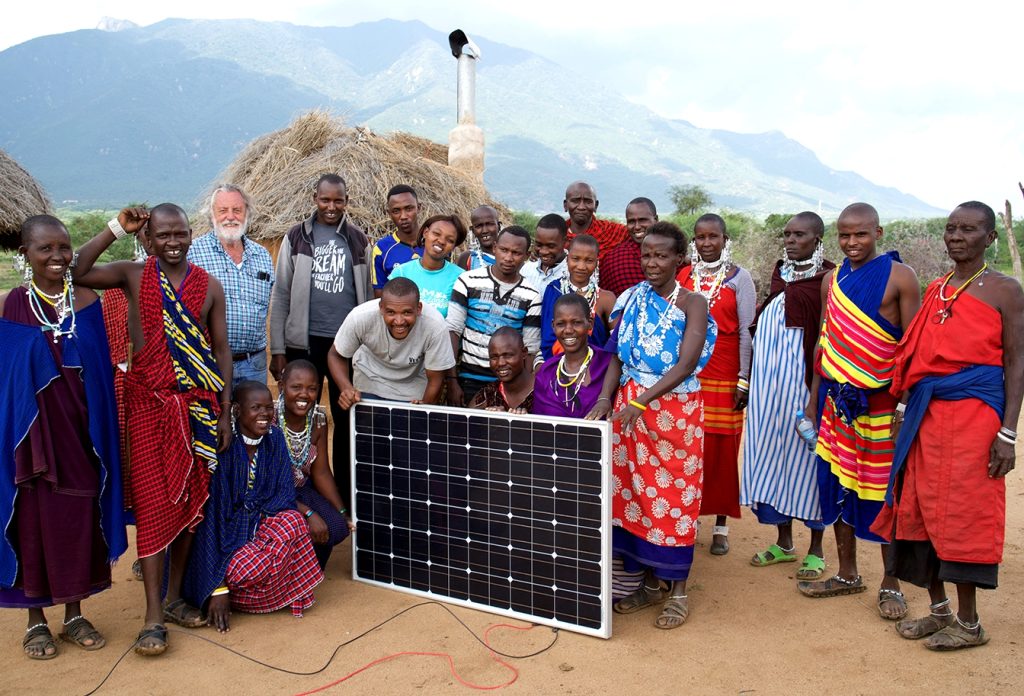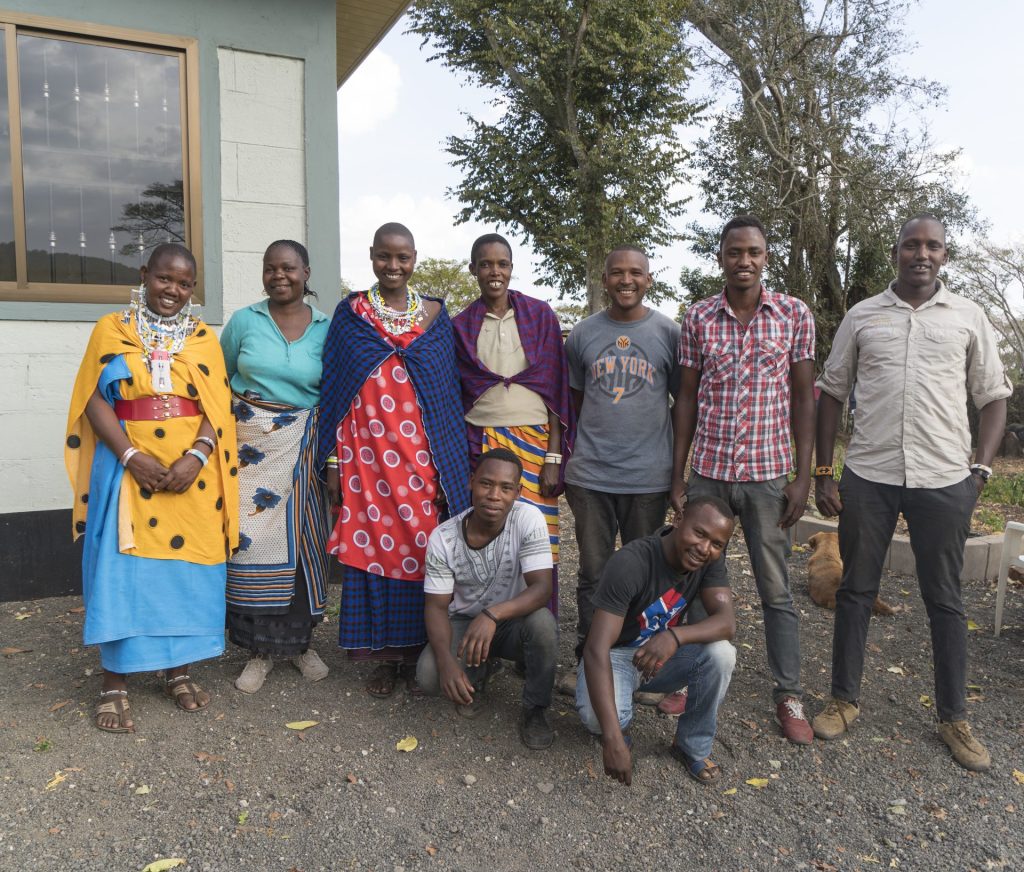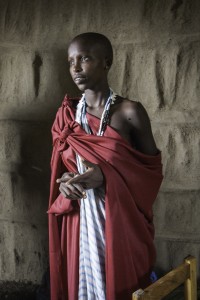Electrification far off the national grid
From the beginning, the Maasai Stoves & Solar Project has integrated electrification along with stove installation.
Watch a video about micro-grid installation
The funds each household pays cover the cost of installation by the Maasai Women’s Installation Team. The International Collaborative covers the rest of the costs, including stove manufacture and materials.
Once a household has their smoke-removing stove, the International Collaborative helps them add solar lighting and charging for their mobile phone. We approach this in one of these three ways. The choice of approach is up to the homeowner:
- We bring them low-cost small-scale solar kits from Arusha shops. Maasai households pay the cost of $30 for the kit
- We designed a very durable larger system which lasts many years. We install this custom-designed solar system for $70
- We can electrify an entire boma (family settlement) with a micro-grid. We share the cost with the boma owner who covers one third of the typical $1,000 cost.
All of the 6,000 Maasai homes with our stove installed have been electrified in one of these three ways:
- There are approximately 5,000 homes with the single-home solar kits
- There are 310 homes with the strong custom-designed solar system
- There are 65 settlement micro-grids, averaging ten homes each for 650 homes in all
The International Collaborative approach to micro-grid electrification
A typical Maasai boma has twelve dwellings and several corrals for cows, goats, and sheep. Each wife of the boma’s leaders lives in a separate home, together with her children. As part of International Collaborative policy, for a boma to qualify for the electrification, our clean and efficient stoves must be installed first, wherever women cook.
Depending on the boma size, the boma owners provide one or two sites for mounting the solar panels and the electrical equipment. We also install the batteries and controlling electronics and house shared appliances in those buildings.
The wiring to homes and corrals is placed underground in protective plastic pipes. We include corral lighting to help keep hyenas away from the livestock.
Community impact of shared electrification
The women of the Project thrive on leadership opportunities and the chance to learn new skills. Innovation and the advancement of new ideas are now a natural part of their outlook and culture. This is spreading to the men, who are especially interested in the solar side of ICSEE (T) actions.
The people are very enthusiastic about the system coming to them. They want to participate in its installation. Men, women, and children work side by side, which is unusual for the Maasai.
They are digging trenches and burying wire together. There are many people eager to receive training for roles in grid engineering, installation, and troubleshooting.
One group especially excited about training opportunities are the Maasai girls. Many would have preferred to stay in school, but instead they have returned to the bomas to fulfill their arranged marriages. For them, any role for which they can continue to use their minds in new ways is truly a blessing.
Micro-grid solar electrification history
On Tuesday, January 20, 2015, we announced our first micro-grid electrification research at the Lobulu boma in the village of Esilalei in Tanzania.
The micro-grid development was introduced with first design and engineering work supported under the PEER program of USAID and the US National Academy of Sciences. PEER stands for Partnerships for the Enhancement of Engagement of Research. Funds were provided by Power Africa -USAID directly to the ICSEE (Tanzania) our Tanzanian non-profit corporation.
Micro-grids for settlements have become one of our normal home and life improvement activities and our share of their cost is now just one of our uses of International Collaborative general funds.
Electrified boma at night
For the eradication of poverty one of the most significant steps is to have a light switch and plenty of power every night, replacing the darkness and the need for open fires to see. Once the Maasai see what nights can be like with micro-grid electrification the demand spreads.





